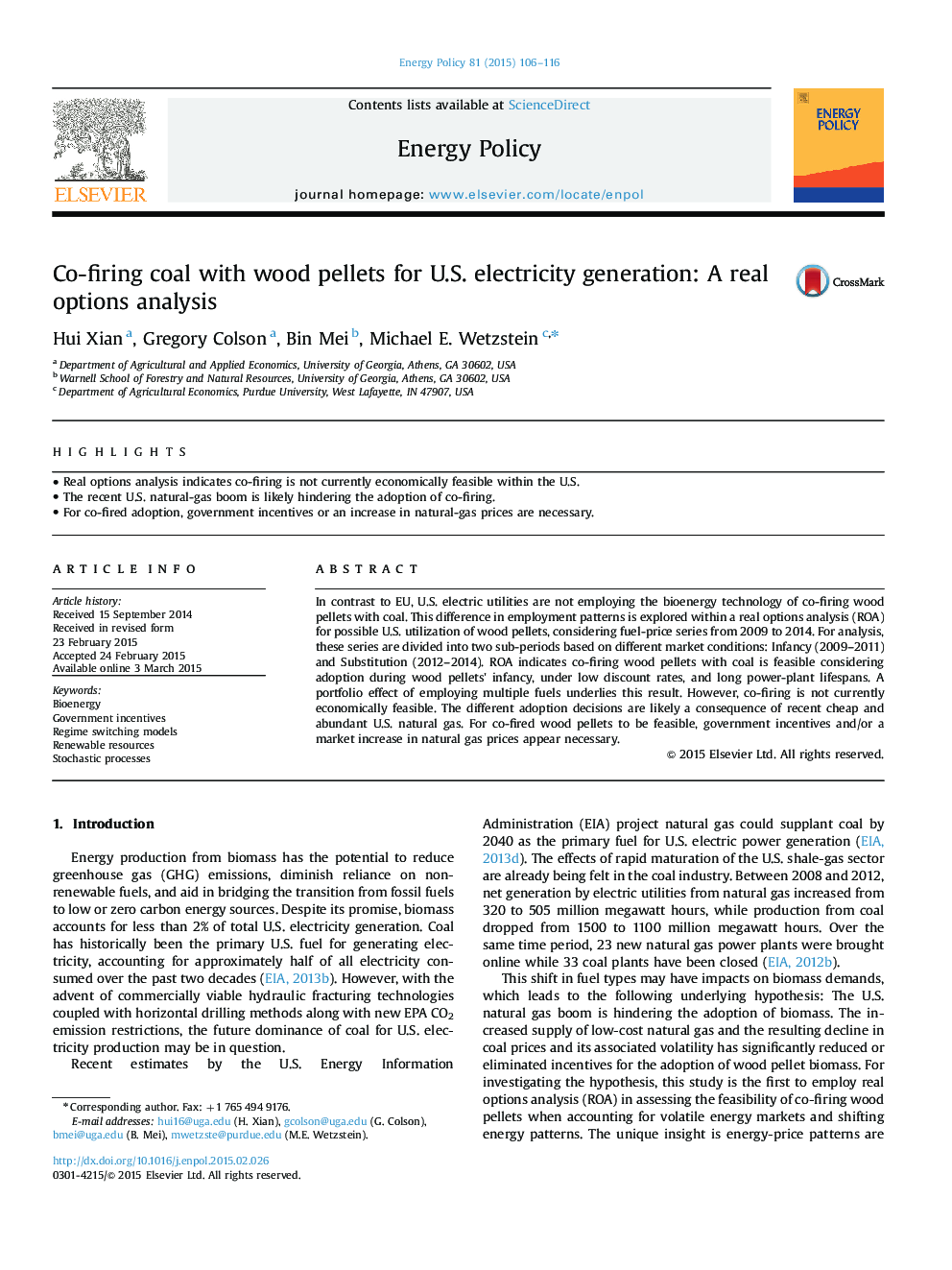| کد مقاله | کد نشریه | سال انتشار | مقاله انگلیسی | نسخه تمام متن |
|---|---|---|---|---|
| 992841 | 1481277 | 2015 | 11 صفحه PDF | دانلود رایگان |
• Real options analysis indicates co-firing is not currently economically feasible within the U.S.
• The recent U.S. natural-gas boom is likely hindering the adoption of co-firing.
• For co-fired adoption, government incentives or an increase in natural-gas prices are necessary.
In contrast to EU, U.S. electric utilities are not employing the bioenergy technology of co-firing wood pellets with coal. This difference in employment patterns is explored within a real options analysis (ROA) for possible U.S. utilization of wood pellets, considering fuel-price series from 2009 to 2014. For analysis, these series are divided into two sub-periods based on different market conditions: Infancy (2009–2011) and Substitution (2012–2014). ROA indicates co-firing wood pellets with coal is feasible considering adoption during wood pellets' infancy, under low discount rates, and long power-plant lifespans. A portfolio effect of employing multiple fuels underlies this result. However, co-firing is not currently economically feasible. The different adoption decisions are likely a consequence of recent cheap and abundant U.S. natural gas. For co-fired wood pellets to be feasible, government incentives and/or a market increase in natural gas prices appear necessary.
Journal: Energy Policy - Volume 81, June 2015, Pages 106–116
